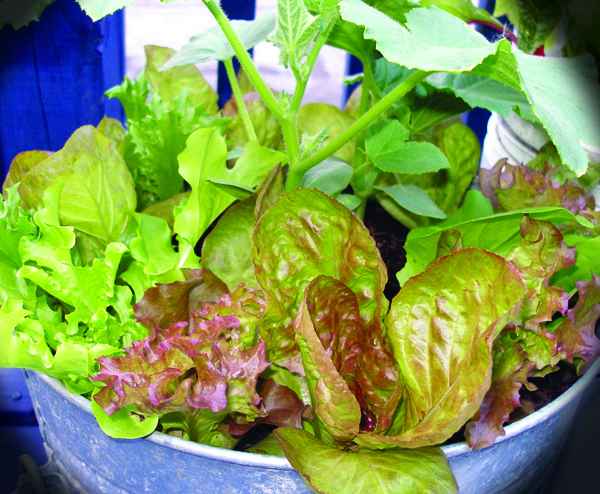 Happy together: Companion planting can increase the yield and the health of your urban garden
Happy together: Companion planting can increase the yield and the health of your urban garden
by Char Vandermeer
It’s time to dust off those planters, rinse out the watering cans and get some dirt under your nails. If your garden looks anything like mine—a sea of containers atop a South Philly roof—then you’re constantly struggling to maximize your growing potential without strangling your plants in their pots.
Companion planting—pairing crops that get along smashingly with one another—isn’t a new idea. Native Americans had it figured out when they planted the Three Sisters (corn, beans and squash) on one hill. The sturdy corn stalks supported the climbing beans and the spreading squash provided ground cover to choke out unwanted weeds and maximize moisture.
Unfortunately, the typical urban garden can’t sustain this particular combination, but here are several other combos that work quite nicely:
Radishes are an amazing spring crop that pair well with beans and cucumbers, both of which thrive in large containers. The perimeter of a five-gallon bucket can easily produce 15 or 20 radishes. They mature quickly, and you can usually cram in at least two harvests before temperatures climb too high. Plus, they act as a trap crop, protecting your beans and cukes from predators by attracting flies and beetles to their leaves instead of the finicky cucumber’s. You can plant them simultaneously and by the time your space-lovers need a little extra room, it’ll be too hot to grow radishes.
Beans are pretty marvelous. They enrich the soil with nitrogen, and all sorts of vegetables clamber to be in their presence. Since pole beans work well in small gardens (anything that grows vertically is an excellent option), try planting chard or strawberries alongside the climbers.
Lettuce is a money maker. At four dollars a bag at the farmers’ market, it’s a container gardener’s must-have cash crop. Last year, with great success, I surrounded my Thai eggplant seedlings with several varieties of leaf lettuce. Just tuck your lettuce seeds around the perimeter of your container, about a quarter inch deep and two to three inches apart, and you’ll be in business. The shallow-rooted lettuce provided ample room for the eggplant while simultaneously filling our table with salad as we waited for the slow-growing nightshades to mature.
In my garden, tomatoes need all the help they can get. They’re susceptible to just about every pest imaginable. Mint, which repels flies and mites while providing excellent ground cover, is a great companion. Basil is another winner—not only does it act as a mosquito repellant, but it also scares off nasty tomato hornworms. Anything that keeps these suckers out of your garden is a very good thing.



